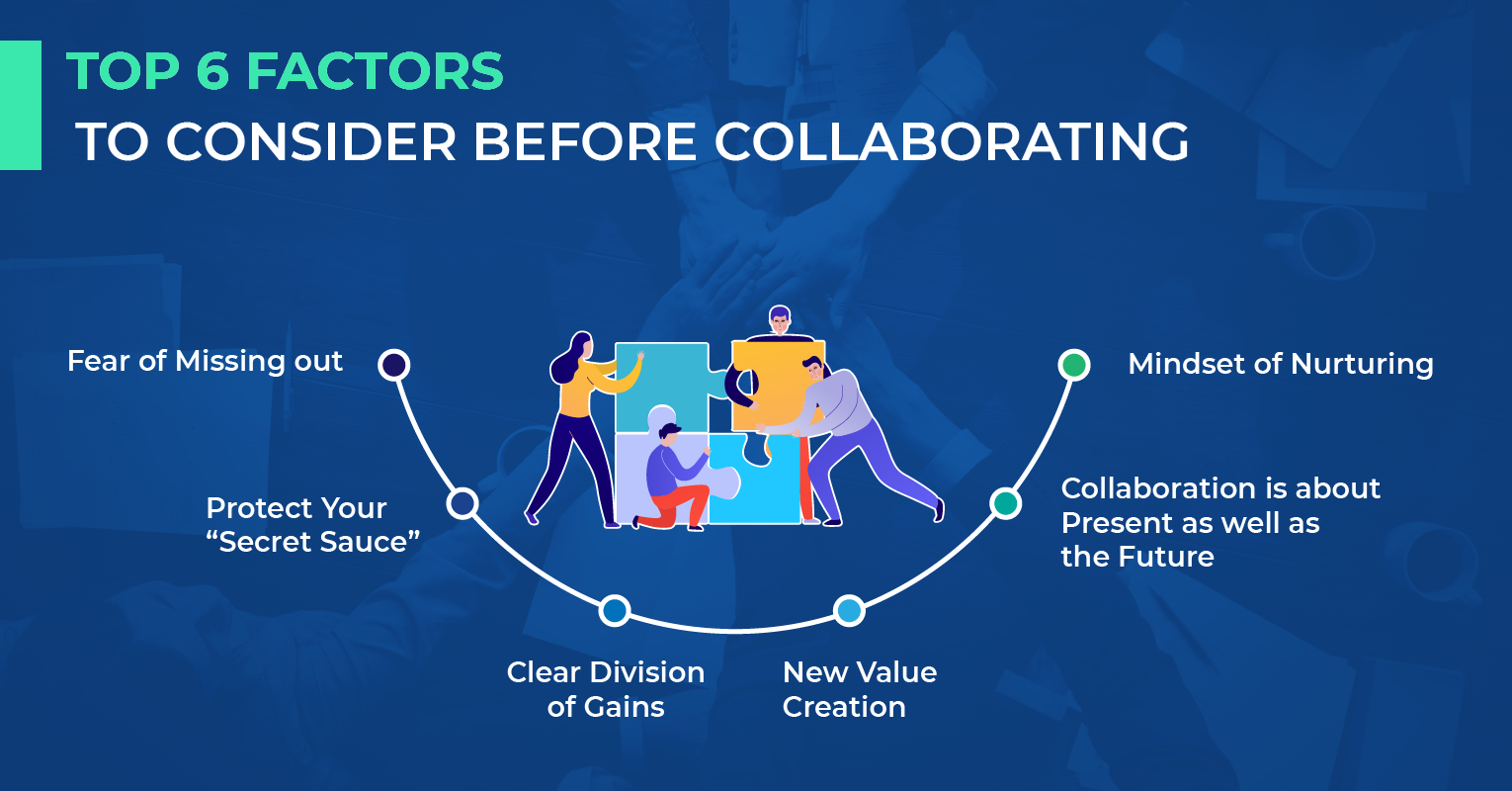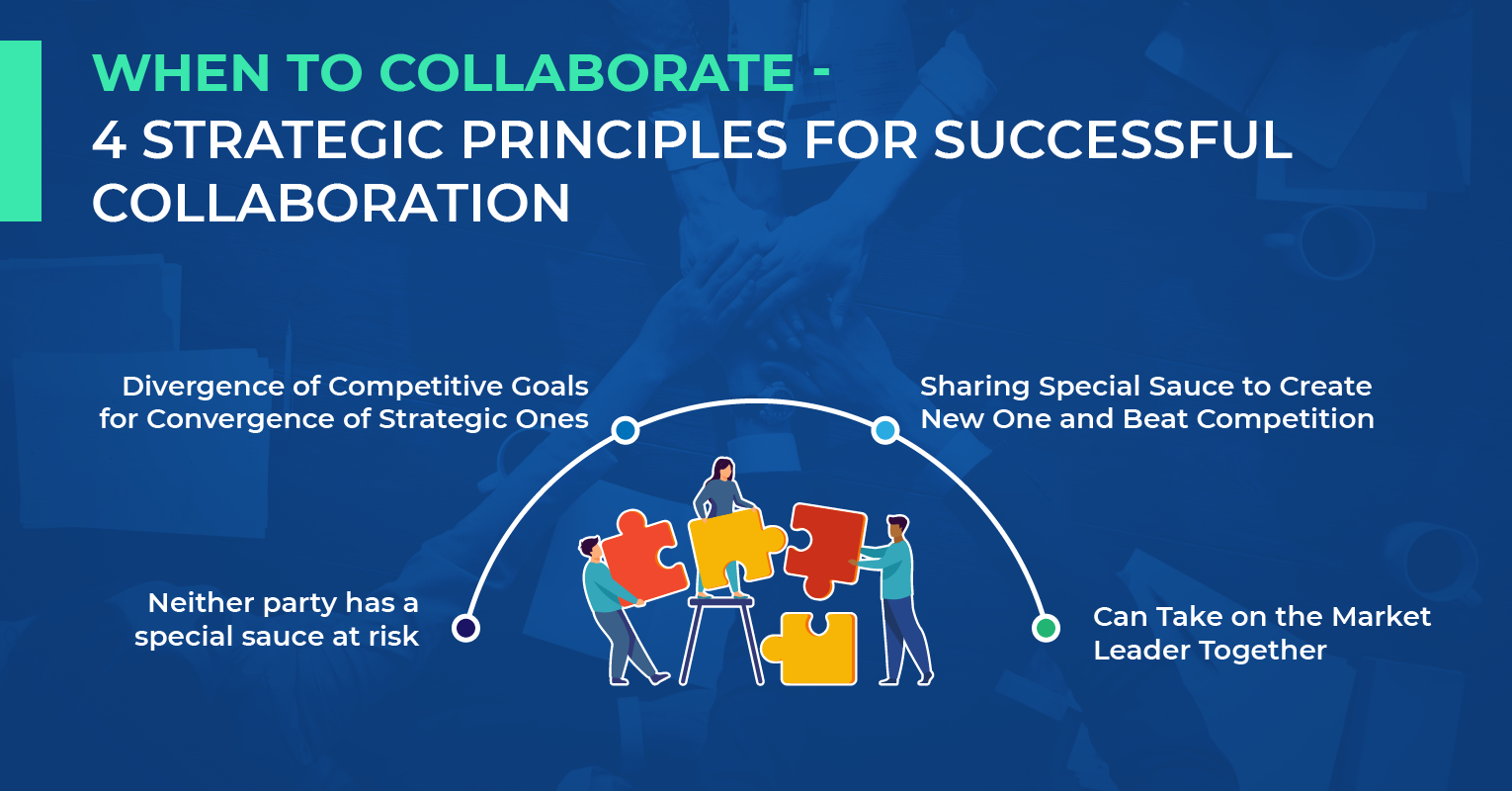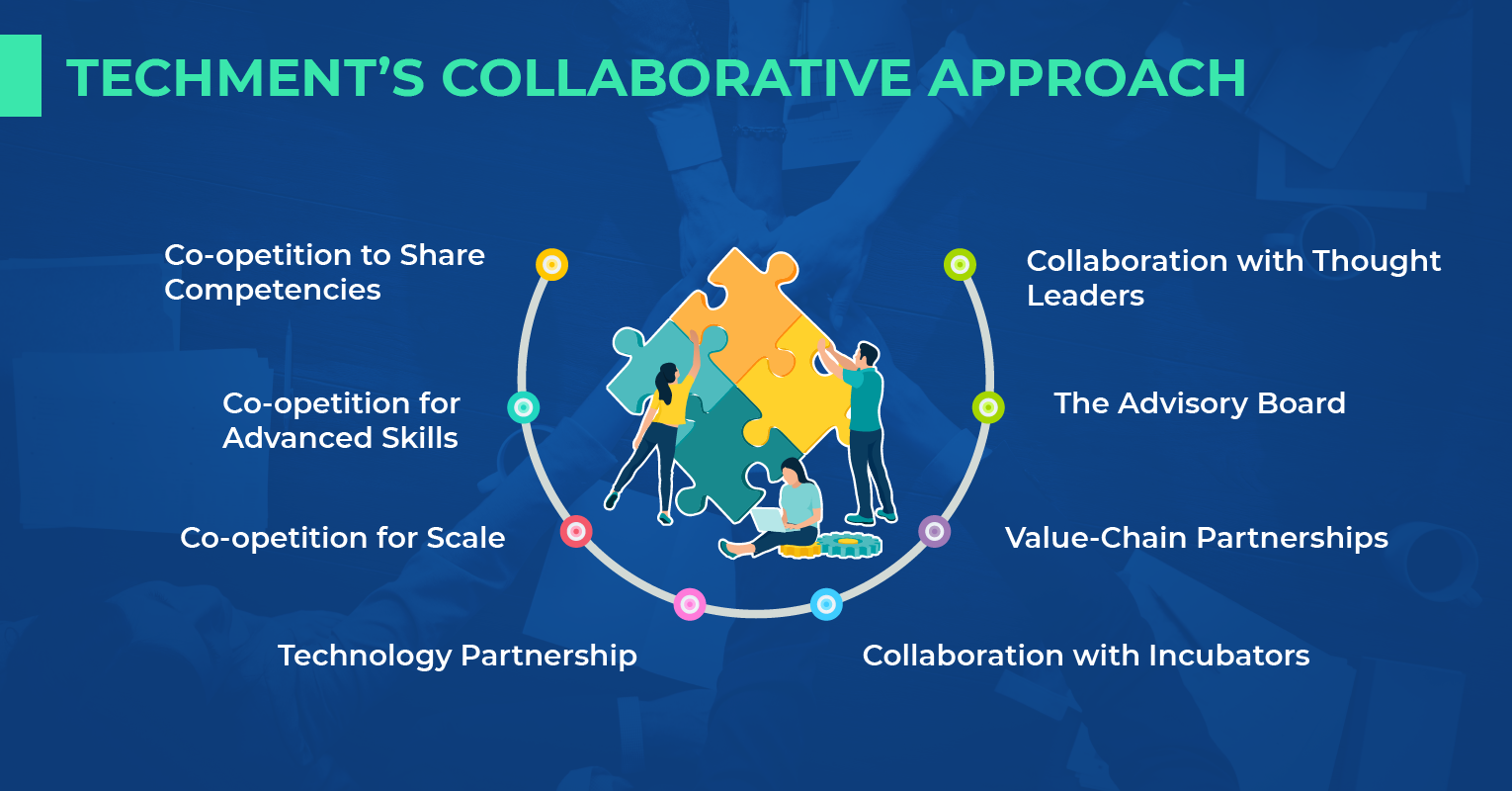An organization is a living organism that needs to form winning relationships with other entities for survival and growth. In a hyper-competitive economy, ability to create and sustain fruitful collaborations creates vital competitive leg up. Collaboration is as old as history of business and existence, but to master the art requires a conscious strategic effort.
Why Collaborate
There are significant reasons to include collaboration as a staple part of corporate growth strategy. Companies have used alliances to acquire new technologies, skills, access to marketplaces and much more. The most cogent argument in favor of collaboration is that it helps companies develop in a short time the capabilities which would be impossible to develop otherwise.
Top 6 factors to consider before collaborating:
- Fear of Missing out: Sometimes working together is a clear win, but even if it isn’t, collaborate, as it may still be better than allowing someone else to take your place.
- Protect Your “Secret Sauce”: A collaboration must not imperil your trade secrets and intellectual properties and leave you at a severe disadvantage.
- Clear Division of Gains: A clear agreement on sharing of gains can avoid many conflicts.
- New Value Creation: A successful collaboration must create new value, and thus sustainable competitive advantage. A mere exchange of value may not be worth it.
- Collaboration is about Present as well as the Future: Beyond the immediate rationale, as synergies evolve, they open doors for new and unimagined possibilities. Strategic myopia is not advisable.
- Mindset of Nurturing: The effort of controlling a collaboration does harm to both parties. Together the relationship needs to be nurtured.

Major Types of Collaboration
Collaborations can be subsumed in two simple categories:
- Value-chain Partnerships: Companies across industries with complementary skills collaborate to create value for the ultimate user. These are strong and close alliances, for instance: a supplier-customer relationship. Value chain partnerships enable businesses to capitalize on their strengths and core competencies in order to achieve a common goal.
- Co-opetition – Competitive Collaboration: Competitive Collaborations such as joint research, technology sharing and exchange, joint ventures, outsourcing, and more are examples of competitive collaboration or “Co-opetition”.
Co-opetition is the act of cooperating with a competitor to achieve a common goal while simultaneously creating a competitive edge over others.
Though an old practice, it is highly relevant today, and yet many firms are uncomfortable with the idea and avoid it, while also missing the opportunities it presents. Some examples of co-opetition are Apple and Samsung, DHL and UPS, Ford and GM, and Google and Yahoo.
Apple and Samsung
Samsung sold its Super Retina edge-to-edge OLED screen to its biggest competitor in the high end phones market, Apple. Doing so gave its competitor edge, but also gave it access to a large market. Also, not doing so would lead to a void that can be occupied by competitors like LG etc. Apple bought the display from its rival, leading to Samsung’s growth and formidability. Apple reckoned that it is worth it to get the best screen and that Samsung was already a well resourced supplier. It was thus a win-win situation for both, and helped them secure their leadership position.
When to Collaborate – 4 Strategic Principles for Successful Collaboration

Here are 4 Strategic principles that should guide collaboration:
- Divergence of Competitive Goals for Convergence of Strategic Ones
Partners contribute to mutual prosperity, by not entering each other’s business territory. Philips and Du Pont collaborated to make compact discs, and prospered as they honored the upstream/downstream division of effort and never entered into other’s business territory. - Neither party has a special sauce at risk
Apple and Samsung, Philips and Du Pont did not have any trade secret at stake. - Sharing Special Sauce to Create New One and Beat Competition
Consider the case of Ford and GM, in 2013, who agreed to share transmission technologies, and freed their engineers to work on electric vehicles. This made them excel in the present market as well as work for the future together. - Can Take on the Market Leader Together
Two small companies in alliance can fruitfully join forces to take on the leader. The success of this collaboration is more likely and long term because both partners benefit from their mutual stand that hurts the leaders.
Techment’s Collaborative Approach
We see collaboration as an essential business function and engages with companies across the value-chain. As a software company, we have partnered with a variety of companies striking win-win relationships. To state a few examples:

- Co-opetition to Share Competencies: We have collaborated with a similar IT company in a different geography, as a long-term business partner and contributed complementary value to various development projects. We are also co-developing an elderly care application with them.
- Co-opetition for Advanced Skills: Our vision is simple, evolve as quickly as possible. We have also collaborated with other technology companies to complement our technology stack so that we can quickly build such capabilities in-house.
- Co-opetition for Scale: Many times smaller and simpler tasks get outsourced to other tech companies who mostly specialize in them. Thus we enjoy easy scalability of the workforce with these partnerships.
- Technology Partnership: We collaborated with AVO, USA, as a Technology partner and developed a process automation platform- TransAssured, that proved instrumental in their digital transformation.
- Collaboration with Thought Leaders: We have also collaborated with Global Thought Leaders to bring out the best contemporary research papers for actionable insights.
- The Advisory Board of Techment has various formal and informal members, all helping us craft the ideal vision for Techment.
- Value-Chain Partnerships: We consider every client as a partner and thus our approach is a long-term one. Pandemic proved we were right, our continuity in serving them in the best possible way helped soften the pandemic’s blow.
- Collaboration with Incubators: Techment partners with incubators as it helps them get technology and helps us remain in touch with bright minds and ideas.
The Future Belongs to Collaborators
Digital has made collaboration easy and essential. Organizations who remain wary of collaborating are certainly missing out on this strategic resource. We believe that it is a direct outcome of the positive relationships and collaboration we have nurtured over the years that have contributed to our success. Organizations can also augment their innovative capabilities by striking the right kinds of collaborations and open the possibility of creating new value.
 All Posts
All Posts


